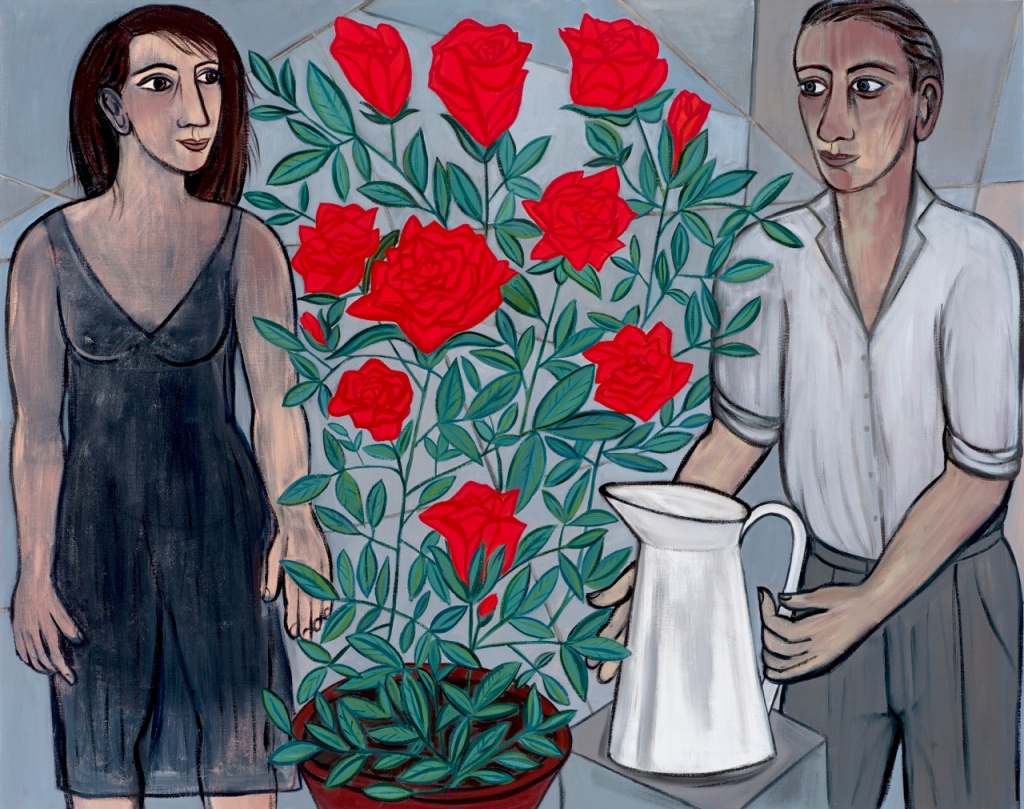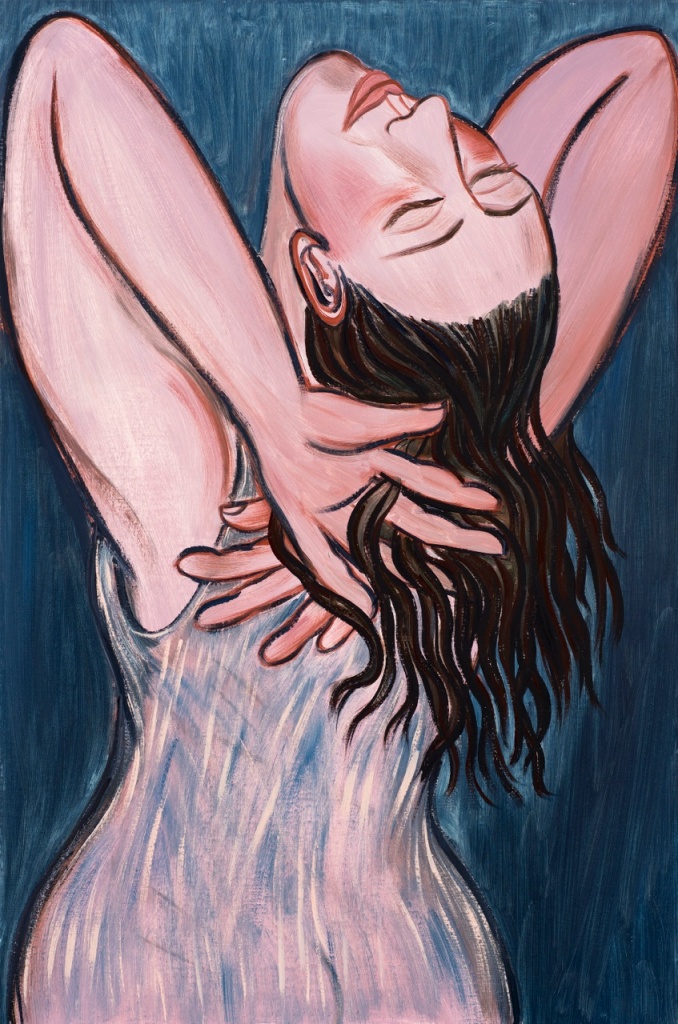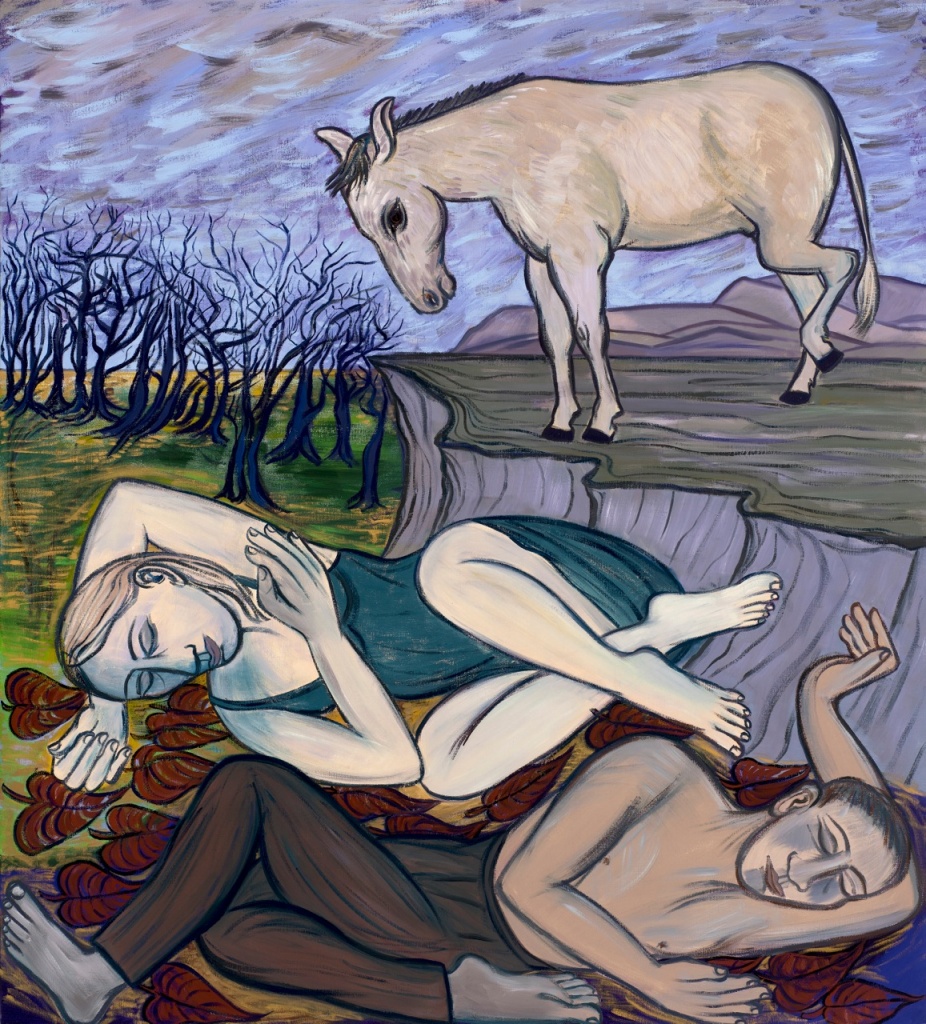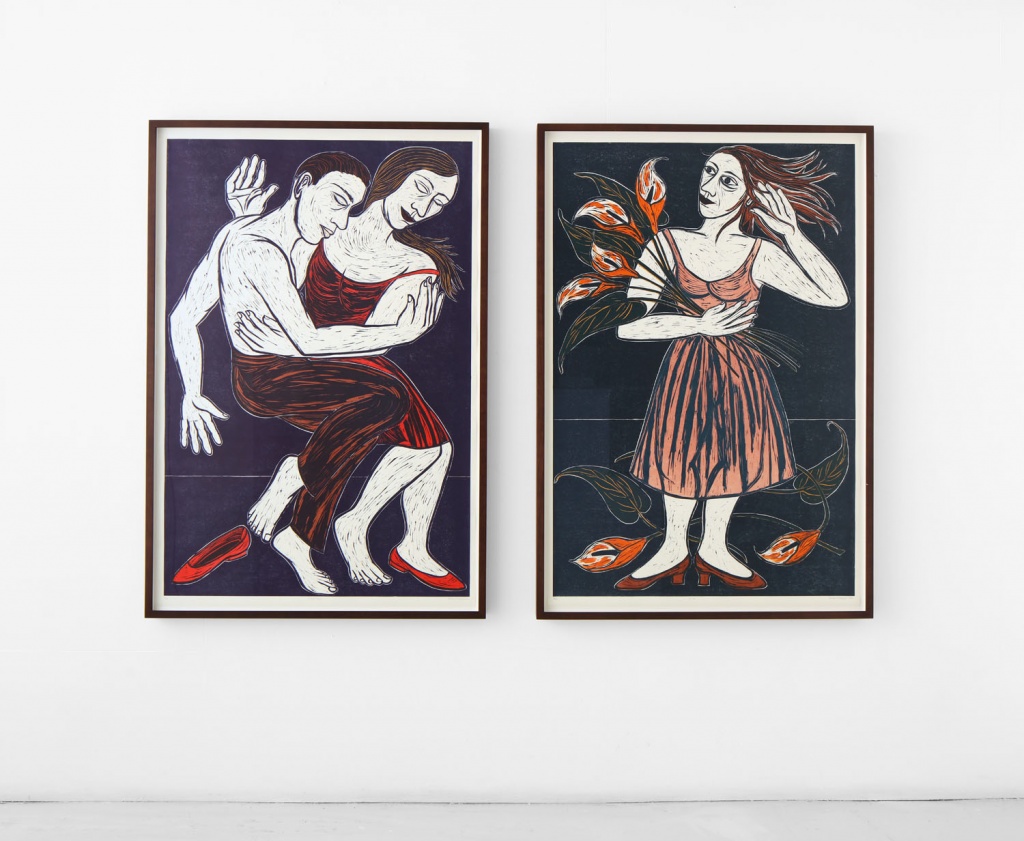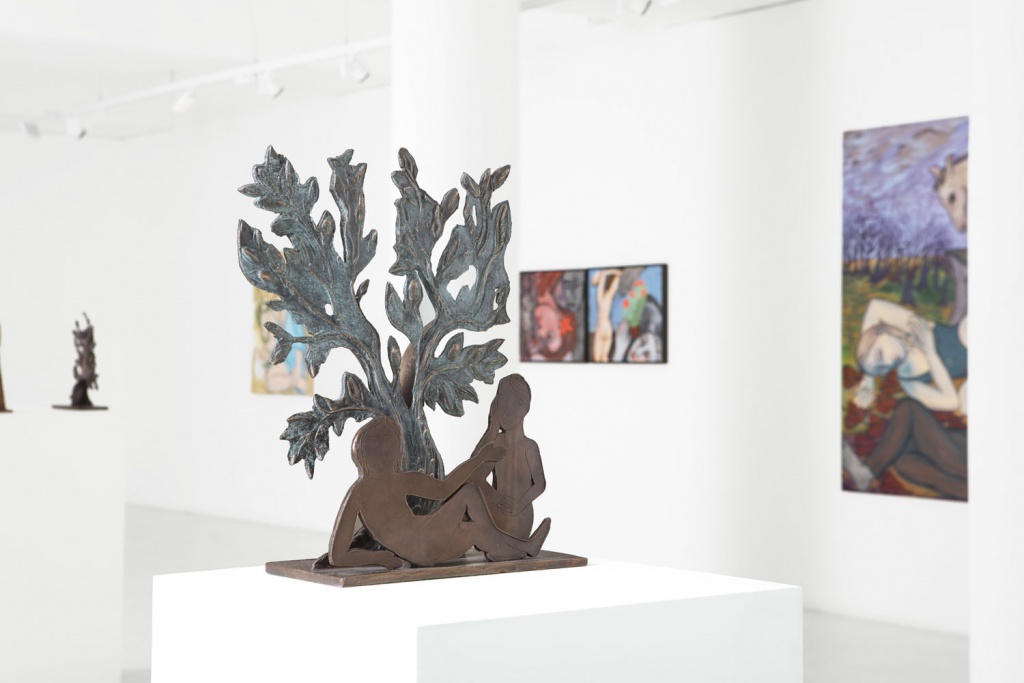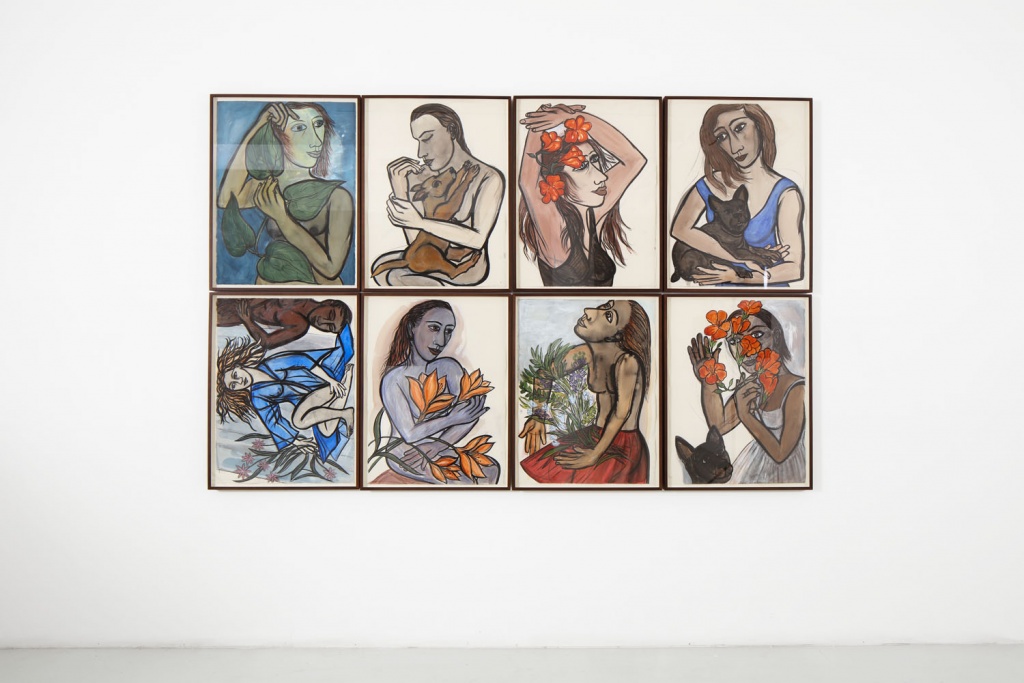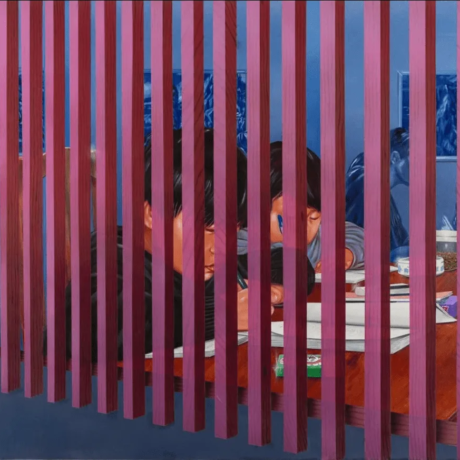Eileen Cooper, RA is a British artist, Goldsmiths graduate and the first female Keeper of the Royal Academy since its beginning in 1768. Sometimes described as a ‘magic realist’, Cooper brings a somewhat romantic viewpoint to contemporary painting, exploring the universal themes of life, death and sexuality. Her solo exhibition Love-in-Idleness is currently showing at London’s Rook & Raven.
Can you tell me a little about the work that is showing Love-in-Idleness?
I’m showing a group of new paintings, drawings and prints, alongside 2 large-scale linocuts. Also included are my recent bronzes, a very new medium for me. The different works are linked closely by the imagery, and include some of the themes I return to time and time again, love, dreaming, sensual enjoyment of the body…all very much from a female perspective. Whilst making this new work I was inspired by Shakespeare’s Midsummer Nights Dream, in particular, the idea of ‘love potions’ made from the flower Love-In-Idleness, which provides the title to the exhibition.
Let’s talk about love! Love — and more broadly, human emotion — is often avoided as a bold expression within contemporary art, what draws you to explore it?
It just underpins everything in life, as sadly does its counterpart hate. I’m much too upbeat to make work about hate. However, love relationships fascinate me, and all the complexities of sexuality and the sensual enjoyment of the world. The body plays a major role in my work, in particular the female body and female identity. Creativity and nurture are very linked for me.
Would you say that your painting has autobiographical elements to it?
Yes. However I insist that my work is not anecdotal, hopefully it’s more allegorical. I use life experiences that we all have, so in my wildest ambitions I hope my work connects with people on some instinctive or universal level. So the narratives are not too personally revealing.
How does a painting come about for you? Is there a very set process for each body of work or do you progress quite instinctively?
I usually make drawings before starting paintings. They are not preliminary works, but things in their own right. This is the way I generate images. I draw and paint from found photographs and songs — poems and movies are also inspirations — but also I take from other art all the time. I look at art from different cultures, and deep into art history, as well as cartoons and comics. I usually start a painting by drawing in charcoal on a white canvas. It always starts with the female figure…then things happen around her, until something starts to get fixed. Then the formal aspects of making a painting take over for a while, then imagery dominates and so on and so on, things come and go, until hopefully I have something compelling. I finish paintings by starting other works, so I usually have several on the go at the same time. It stops me being precious.
You’ve taught many great young artists in your time at the Royal Academy, from Eddie Peake, to Prem Sahib, and Hannah Perry. Are there any movements amongst the new generation that are especially exciting you right now?
I am fascinated by the way this generation move freely between art forms, using both traditional and digital processes, mixing industrial, the handmade and old technologies together. The hybridity really excites me. I’m often introduced to new materials through my students. I love the fact that painting is still being transformed and added to.
I have had a long teaching career, happily always part time. Student work is exciting, it’s a privilege to have that intimate contact. I have to pinch myself when I realise I’m dancing in the school bar with people less than half my age! In my early days as a tutor at St Martins I taught Peter Doig, David Harrison, Stephen Chambers and the group of students there were amazing, the fashion students were around as well, including John Galliano. I have been very lucky, with each generation of emerging artists to learn something new.
‘Love-in-Idleness’ is showing until 28 May at Rook & Raven.
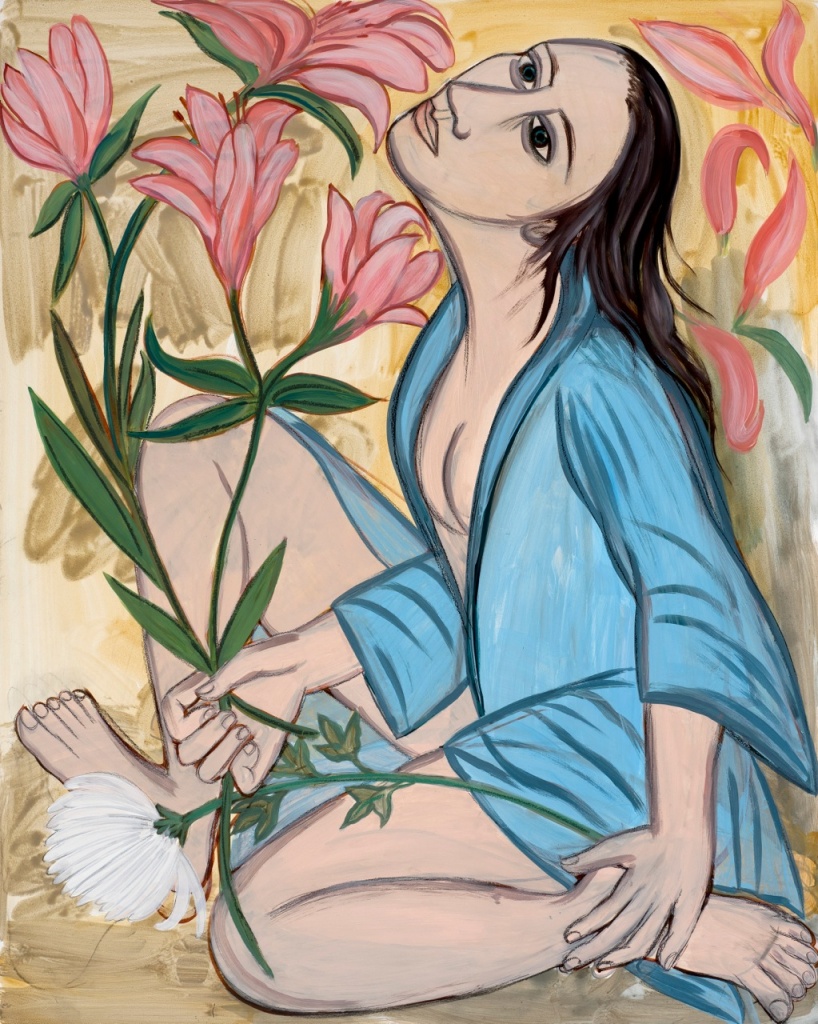
Eileen Cooper RA, Fiore, 2015, Mixed media on board, 100 x 80 cm
